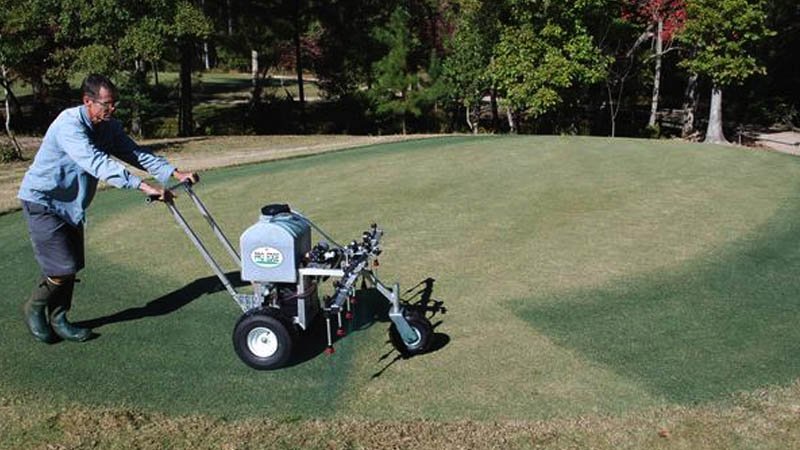
It wasn't that long ago when superintendents throughout the south spent much of the fall season overseeding ryegrass into soon-to-be-dormant Bermuda.
Overuse of water during fall establishment and challenges associated with spring transition back to warm-season turf, along with the accompanying financial considerations were among the many factors that eventually led so many superintendents to chuck overseeding in favor of a dormant Bermuda surface.
In recent years, painting or coloring turf has played an increasingly important role across the South in helping superintendents providing green putting surfaces in late fall, throughout winter and into early spring.
Professor Grady Miller, Ph.D., and research technician Drew Pinnix of North Carolina State University have compiled the Guide to Turf Colorant Use that covers everything from types of products for specific uses, the effects of colorants on turf, application tips, pros and cons of colorant use and more.
Miller wrote: "Colorants and related products offer an alternative to overseeding that may be more cost-effective while still providing an aesthetically pleasing turfgrass surface during dormancy of warm-season turfgrasses. These products do not provide a wearable surface like a growing turfgrass. But under moderate wear, using such a product may result in healthier Bermudagrass due to less competition during the spring and summer months. The products vary in color, longevity, and ease of application (among other attributes), so turfgrass managers have options that they may consider."
Colorants fall into three categories: paints, pigments or dyes.
Paints contain four basic components: solvent, pigment, binder and additives. Solvent consists of water; pigment is an insoluble product that provides color; binder - often a resin - is a film-forming component of paint that adheres pigments together; additives consist of surfactants, thickeners and emulsifiers to aide in mixing, application, dispersion or adhesion.
Colorants and related products offer an alternative to overseeding that may be more cost-effective while still providing an aesthetically pleasing turfgrass surface during dormancy of warm-season turfgrasses.
Colorants can be a dyes, pigment products or paints, and usually are considered to be a product used to treat completely dormant turfgrass.
Pigment is a highly concentrated, insoluble substance that forms a suspension when mixed with water forms a suspension. Pigments usually contain little or no binder.
Dye is a liquid that contains soluble ingredients such that it forms a solution and often is used as a spray indicator.
Pigments have a lower viscosity and do not express the same color longevity as a paint, and they often work much better when applied to naturally greener turfgrass that has some photosynthetically active tissue to enhance color for short durations. In contrast, the products with higher binder content can be applied to dormant turfgrass and still have acceptable, lasting color.
Potential drawbacks of using colorants include: once dormant tissue is worn or torn away, no regeneration occurs until spring, so wear factor must be considered; application error or blemished turfgrass can result in an uneven appearance.
Wrote Miller: "Turf managers can pick from several spray-on products to keep their turfgrass green regardless of the turf's condition. These products can accentuate light-green grass, mask blemishes, or cover the tan color of dormant turfgrass. They can be used on warm-season or cool-season turfgrass and may be applied on lawns, sports fields, or golf courses. There are several products currently on the market, so picking the best one for a situation may require some experimenting. Because there are two significant product categories, one may want to begin their decision process by deciding how they will use the product based on selected use characteristics."

